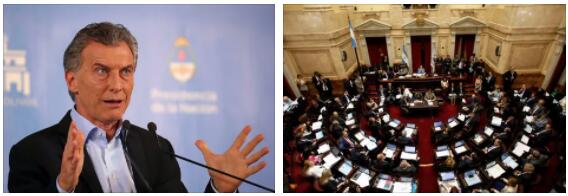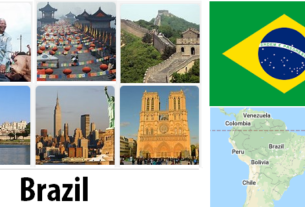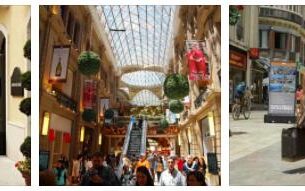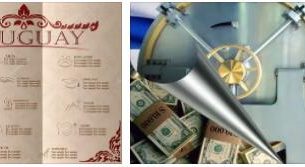The President and Vice President are elected by direct secret ballot in general elections for 4 years. Direct re-election of the head of state for a second term is allowed. Check diseaseslearning for political system of Argentina.
The most prominent statesmen of Argentina include:
José de San Martin (1776-1850), one of the main leaders of the War of Independence of the Spanish Colonies in America 1810-26, national hero of Argentina;
Mariano Moreno (1778-1811) – one of the initiators and leaders of the May Revolution of 1810;
Bernardino Rivadavia (1780–1845), one of the leaders in the struggle for independence, president of Argentina in 1826–27, the first attempt to carry out serious bourgeois transformations in the agrarian sector is associated with his name;
Bartolome Mitre (1821-1906), president of Argentina from 1862-68, actively promoted the process of national unification and at the same time promoted the expansion of foreign, mainly British, capital;
Domingo Faustino Sarmiento (1811–88), president of Argentina from 1868–74, actively promoted the development of the economy and culture;
Hipólito Yrigoyen (1832–1933), president of Argentina in 1916–22 and 1928–30, one of the founders and leader of the largest political party in Argentina, the GRS, played a decisive role in establishing the first representative democracy political regime in Argentine history, carried out a number of social transformations. reformist character;
Juan Domingo Peron (1895-1974), president of Argentina in 1946-55 and in 1973-74, general, carried out a complex of large-scale nationalist reforms.
In accordance with the federal principle of government proclaimed by the Constitution, the provinces of Argentina have their own Constitutions and authorities – Legislative Assemblies, governors, and the judiciary. All provincial constitutions are drawn up in accordance with the principles of the nationwide. The provinces do not enjoy the rights transferred to the state. At the same time, certain rights are assigned to them that do not fall within the competence of the federal government.
Argentina’s largest traditional parties for over 50 years right up to con. 20th century were the GRS and the Justicialist Party (KP) – under this name, since 1973, Peronism has appeared on the political arena. The polarization of the vast majority of Argentine voters around Peronist and radical candidates in the elections of 1983, 1985, 1987, 1989 testified to the formation in the 1980s. two-party system. Despite the ongoing political rivalry, the positions of the two largest parties in Argentina on fundamental issues during this period are converging. In both, supporters of the neoliberal course are beginning to enjoy the predominant influence. The inevitable reaction to the implementation of this course gave rise to a new political movement – FREPASO, the main core of which was made up of former Peronists who left the KP because of their disagreement with the policies of C. S. Menem. FREPASO turned into a serious alternative to the hegemony of the SRS and HP: in the 1995 presidential election, the FREPASO candidate took 2nd place, pushing the SRS candidate to 3rd. The results of the 1997 elections confirmed the development of this trend. In the presidential elections of 1999, FREPASO acted in alliance with the State Registration Service as part of the Alliance for Labour, Justice and Education. The elections brought victory to the candidate of the Alliance, the leader of the GRS, F. de la Rua. Despite the fact that the program of this association was center-left in nature, in practice the government of F. de la Rua continued to pursue the same neoliberal course, which ultimately led to the extreme aggravation of all contradictions and a social explosion in December 2001. The result of these events was the actual collapse of the State Registration Service and a split in HP.
However, the deep crisis of the largest traditional parties has not yet led to the emergence of any effective alternative, although attempts to put forward such an alternative are constantly being made. The latest of these efforts is the Alternative for a Republic of Equals, led by Elisa Carrio. In addition to those mentioned, there are many small parties and movements of various ideological orientations operating in the political arena of Argentina.
An important factor of power in Argentina was and is to this day entrepreneurial unions. The most famous and influential of them are the “Agricultural Society” (a traditional association of Argentine landowners) and the “Industrial Union” (an organization to which representatives of the country’s industrial capital belong).
The main directions of Argentina’s domestic policy in recent years have been determined by feverish attempts to find a way out of the most severe crisis into which the country was plunged as a result of the implementation of a tough neo-liberal course during the tenure of C. S. Menem. In con. 2001 – beginning. In 2002, several presidents were replaced in a short time. Only Elected by both houses of Congress in January 2002 as an interim head of state, E. Duhalde, a prominent figure in the KP, managed to normalize the situation to some extent. On the whole, the measures taken by his government in 2002-03 were of an opportunistic nature, which makes it impossible to talk about the implementation of any alternative program. At the same time, one can trace a certain trend of a social-democratic nature in his speeches.
Priority areas of Argentina’s foreign policy at the present stage are, according to the statements of the current President N. Kirchner, strengthening ties with Latin American countries, primarily with Brazil, expanding and strengthening relations with the EU. However, maintaining normal all-round relations with the United States is also seen as a major foreign policy task.
The armed forces of Argentina consist of the army, the navy, including naval aviation and marines, the air force, the national air police, the national gendarmerie and the coast guard. The draft age is 20 years. Since the administration of R. Alfonsin came to power in 1983, all subsequent constitutional governments of Argentina have pursued a policy of reforming the Armed Forces along the lines of Western democracies. The essence of the reform is to turn the army into a purely professional institution, standing outside of politics. Over the past two decades, significant progress has been made in this direction, the senior officers have ceased to act as a direct and most powerful factor in power – the role that the Argentine military elite played for many decades (from 1930 to 1983).
Argentina has diplomatic relations with the Russian Federation (established with the USSR on June 6, 1946).



